About The Pedal Creators
Everyone can build excellent boutique guitar pedals. Everything we do is to make that experience more accessible and user-friendlier. The Pedal Creators series are the best and easiest to build PCBs ever. Including most resistors and capacitors already soldered on board as SMD components, leaving the key values for you to experiment and craft your own tone. Now you can build a pedal you are proud of in less than an hour without any previous experience. What are you waiting for to become a Pedal Creator?
The Pedal creators – key features:
- Easy to build, no previous experience required. It’s like Lego for musicians.
- Fast assembly, finish a pedal in less than an hour. Play your favorite record and enjoy the ride along.
- 100% mistake-proof. Even my grandma can build one while she cooks.
- Build your own boutique pedal. Experiment with different values and make the pedal you always dreamed of.
- Easy to scale. Turn your passion into a money-making machine.
Project overview
Welcome to your new Optical Vibe Machine! With roots on the classic Uni-vibe, the guys from Akron, Ohio, did a serious job updating that classic pedal for the 21st-century demands with the same lush, pulsating, three-dimensional swirling sound you know and love and some modern accouterments for all you land-lubbers out there.
Designed to use with all kinds of instruments, pickups, and to play well with dirt, so nobody’s left waiting on shore!
Introduction
The guys at Earthquaker made some improvements to the original circuit. Smaller, more reliable by using LEDs instead of light bulbs. Able to run it at 9v-18v and adding some extra controls. So there was not much left for us to do but giving you an extra tonal option. Via toggle switch and bi Color led, you can get even more sounds out of it than the original provides. I highly recommend using sockets to experiment with the LEDs and solder the LDR’s in after getting an idea of how tall the led in the sockets will be. So you can match the height. While the original EQD unit uses a yellow LED, you could use a green/yellow led. With a minor difference in sound or a red/blue difference, there is way more present without a need to touch any knob, but it’s overall a bit sharper sounding. Personally, I used a single Color orange diffused led for a tone that made me more than happy. In case you‘re so in love with one specific LED, you can leave the toggle out and solder a jumper. I highly recommend experimenting with this and the distance between LDR and LED. To get an equal distance between them, you can simply use a guitar thick 2mm guitar pick as a spacer.
Controls
- Intensity: This controls how subtle or intense the overall effect is. Counterclockwise from noon are the more subtle, classic sounds. Clockwise from noon are the more drastic and intense sounds.
- Voice: Dials in the overall sound. Turn it clockwise for a fuller sound with more lows, bring it back for a thinner, more midrange-focused tone.
- Rate: Controls the speed of the effect. Counterclockwise for slow, clockwise for fast.
- Level: Controls the volume of the effect. Unity is around 1 o’clock; everything above that is boost.
- Throb: This controls the low-end pulse. It may not be immediately evident on the bridge pickup, but switch to the neck or add some dirt, and it comes alive. All the way up for more throb, dial it back for less. It works best when the Voice is set to a warmer tone.
- LED toggle: This allows you to choose which color of the bicolored LED will shine, changing the effect’s behavior.
For further analysis on this circuit take a look at this thread on DIT Stomp Boxes Forum and Free Stomp Boxes Forum.
For any technical questions regarding this build don’t forget to check out our Facebook Group and our forum at Free Stomp Boxes.
Submarine Device SMD – Building Docs
Submarine Device SMD – Drilling Templates
Be the first to review “Submarine Device SMD – Australia” Cancel reply
Related products
Death by Audio + Earthquaker Devices Bestsellers Pack
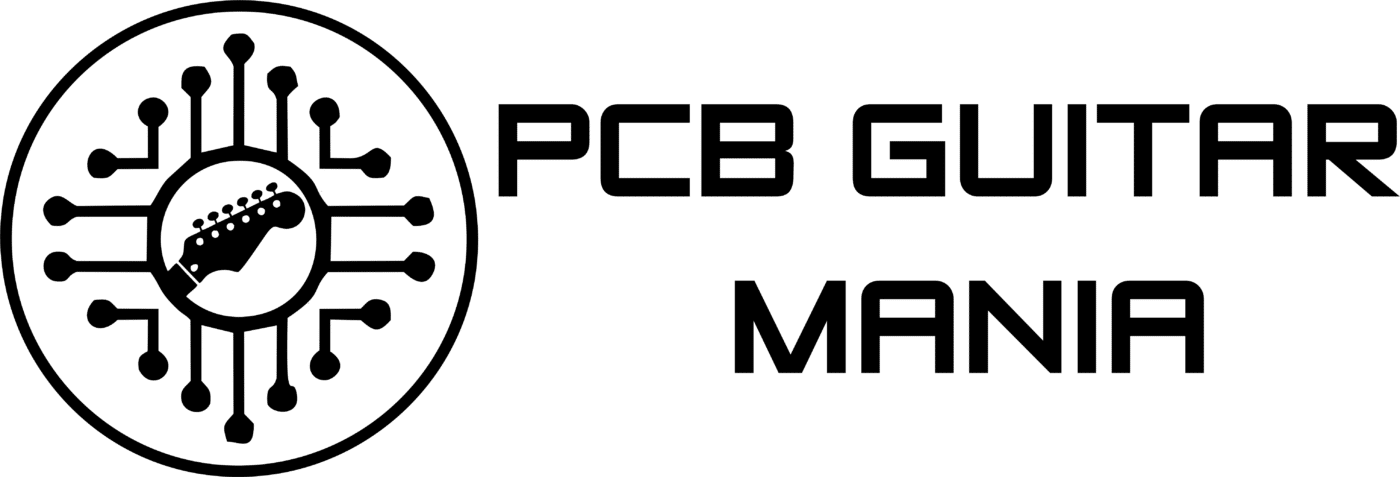
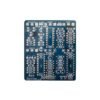

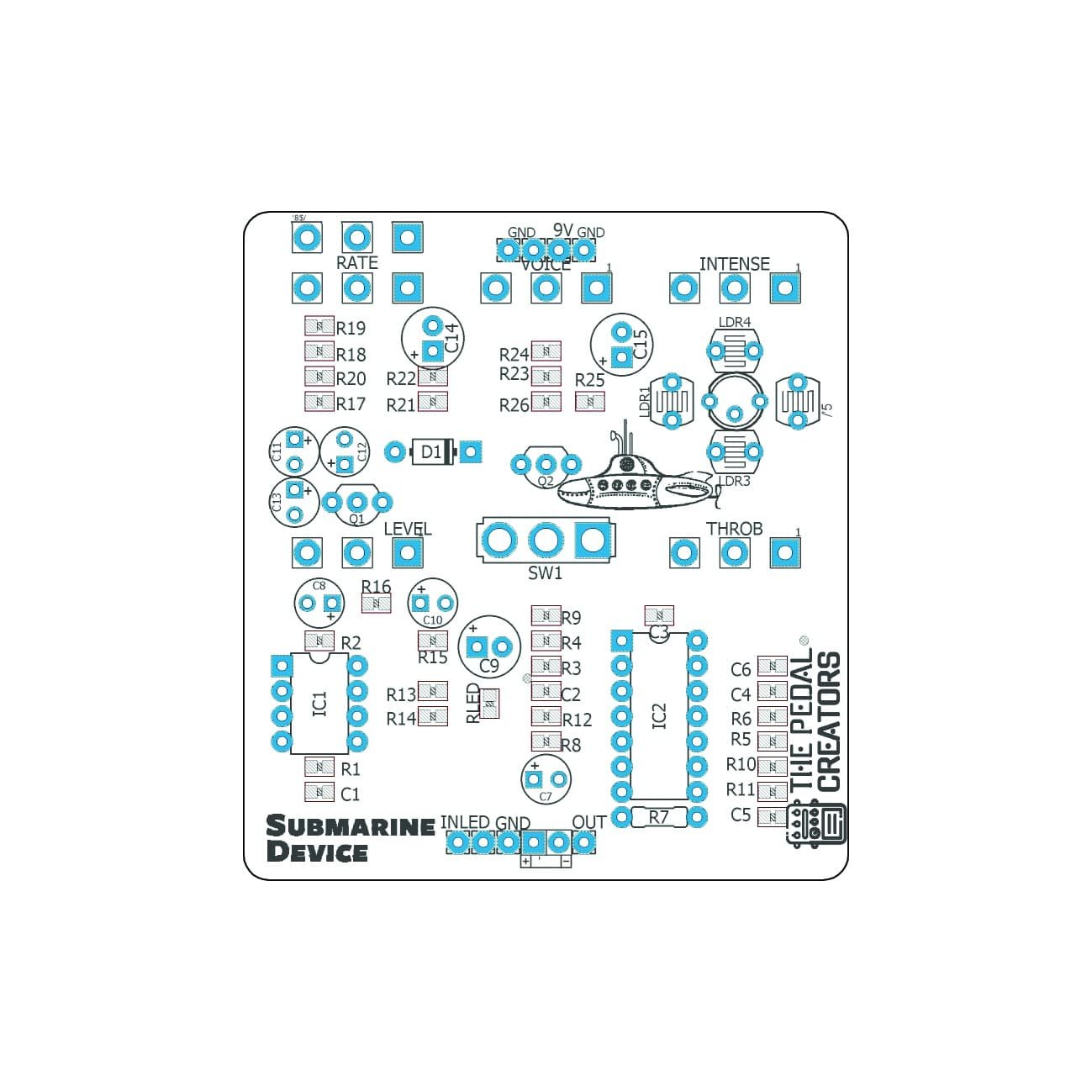

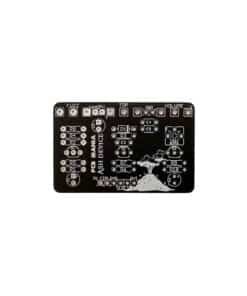
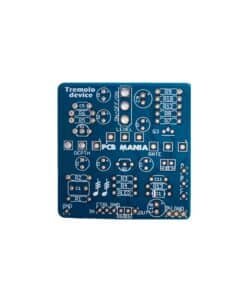
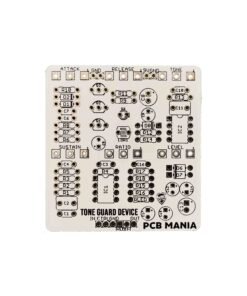
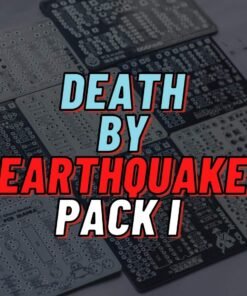
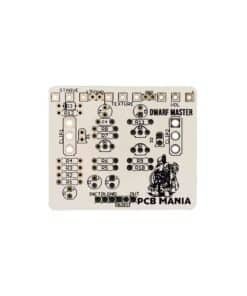


Reviews
There are no reviews yet.